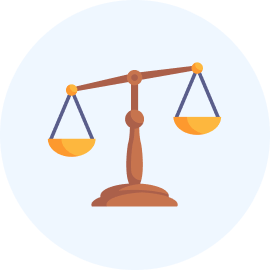CLAT Exam > CLAT Questions > Directions: In the following questions, a st...
Start Learning for Free
Directions: In the following questions, a statement or two are followed by two conclusions.
Statement: Patients with minor ailments usually do not go to eminent doctors.
Conclusions: I. Eminent doctors remain too busy with patients suffering from serious complications.
II. Their charges are rather high.
- a)if conclusion I follows;
- b)if conclusion II follows;
- c)if both I and II follow;
- d)if either I or II follows; and
- e)if neither I nor II follows.
Correct answer is option 'D'. Can you explain this answer?
Verified Answer
Directions: In the following questions, a statement or two are follow...
Only one of the two reasons mentioned could stop patients from going to eminent doctors.
View all questions of this test
Most Upvoted Answer
Directions: In the following questions, a statement or two are follow...
Statement: Patients with minor ailments usually do not go to eminent doctors.
Conclusions:
I. Eminent doctors remain too busy with patients suffering from serious complications.
II. Their charges are rather high.
Explanation:
To determine whether the conclusions follow from the given statement, we need to analyze each conclusion separately.
Conclusion I: Eminent doctors remain too busy with patients suffering from serious complications.
The statement does not explicitly mention the reason why patients with minor ailments do not go to eminent doctors. It is possible that patients with minor ailments do not go to eminent doctors simply because they do not require the expertise of an eminent doctor for their condition. Therefore, it cannot be concluded that eminent doctors remain too busy with patients suffering from serious complications.
Conclusion II: Their charges are rather high.
The statement does not provide any information about the charges of eminent doctors. It only states that patients with minor ailments usually do not go to eminent doctors. The conclusion that their charges are rather high is not supported by the given statement.
Conclusion:
Neither of the conclusions follows from the given statement. It cannot be concluded that eminent doctors remain too busy with patients suffering from serious complications or that their charges are rather high based on the information given in the statement.
Therefore, the correct answer is option 'e) if neither I nor II follows.'
Conclusions:
I. Eminent doctors remain too busy with patients suffering from serious complications.
II. Their charges are rather high.
Explanation:
To determine whether the conclusions follow from the given statement, we need to analyze each conclusion separately.
Conclusion I: Eminent doctors remain too busy with patients suffering from serious complications.
The statement does not explicitly mention the reason why patients with minor ailments do not go to eminent doctors. It is possible that patients with minor ailments do not go to eminent doctors simply because they do not require the expertise of an eminent doctor for their condition. Therefore, it cannot be concluded that eminent doctors remain too busy with patients suffering from serious complications.
Conclusion II: Their charges are rather high.
The statement does not provide any information about the charges of eminent doctors. It only states that patients with minor ailments usually do not go to eminent doctors. The conclusion that their charges are rather high is not supported by the given statement.
Conclusion:
Neither of the conclusions follows from the given statement. It cannot be concluded that eminent doctors remain too busy with patients suffering from serious complications or that their charges are rather high based on the information given in the statement.
Therefore, the correct answer is option 'e) if neither I nor II follows.'
Free Test
FREE
| Start Free Test |
Community Answer
Directions: In the following questions, a statement or two are follow...
D

|
Explore Courses for CLAT exam
|

|
Similar CLAT Doubts
Question Description
Directions: In the following questions, a statement or two are followed by two conclusions.Statement: Patients with minor ailments usually do not go to eminent doctors.Conclusions: I. Eminent doctors remain too busy with patients suffering from serious complications.II. Their charges are rather high.a) if conclusion I follows;b) if conclusion II follows;c) if both I and II follow;d) if either I or II follows; ande) if neither I nor II follows.Correct answer is option 'D'. Can you explain this answer? for CLAT 2025 is part of CLAT preparation. The Question and answers have been prepared according to the CLAT exam syllabus. Information about Directions: In the following questions, a statement or two are followed by two conclusions.Statement: Patients with minor ailments usually do not go to eminent doctors.Conclusions: I. Eminent doctors remain too busy with patients suffering from serious complications.II. Their charges are rather high.a) if conclusion I follows;b) if conclusion II follows;c) if both I and II follow;d) if either I or II follows; ande) if neither I nor II follows.Correct answer is option 'D'. Can you explain this answer? covers all topics & solutions for CLAT 2025 Exam. Find important definitions, questions, meanings, examples, exercises and tests below for Directions: In the following questions, a statement or two are followed by two conclusions.Statement: Patients with minor ailments usually do not go to eminent doctors.Conclusions: I. Eminent doctors remain too busy with patients suffering from serious complications.II. Their charges are rather high.a) if conclusion I follows;b) if conclusion II follows;c) if both I and II follow;d) if either I or II follows; ande) if neither I nor II follows.Correct answer is option 'D'. Can you explain this answer?.
Directions: In the following questions, a statement or two are followed by two conclusions.Statement: Patients with minor ailments usually do not go to eminent doctors.Conclusions: I. Eminent doctors remain too busy with patients suffering from serious complications.II. Their charges are rather high.a) if conclusion I follows;b) if conclusion II follows;c) if both I and II follow;d) if either I or II follows; ande) if neither I nor II follows.Correct answer is option 'D'. Can you explain this answer? for CLAT 2025 is part of CLAT preparation. The Question and answers have been prepared according to the CLAT exam syllabus. Information about Directions: In the following questions, a statement or two are followed by two conclusions.Statement: Patients with minor ailments usually do not go to eminent doctors.Conclusions: I. Eminent doctors remain too busy with patients suffering from serious complications.II. Their charges are rather high.a) if conclusion I follows;b) if conclusion II follows;c) if both I and II follow;d) if either I or II follows; ande) if neither I nor II follows.Correct answer is option 'D'. Can you explain this answer? covers all topics & solutions for CLAT 2025 Exam. Find important definitions, questions, meanings, examples, exercises and tests below for Directions: In the following questions, a statement or two are followed by two conclusions.Statement: Patients with minor ailments usually do not go to eminent doctors.Conclusions: I. Eminent doctors remain too busy with patients suffering from serious complications.II. Their charges are rather high.a) if conclusion I follows;b) if conclusion II follows;c) if both I and II follow;d) if either I or II follows; ande) if neither I nor II follows.Correct answer is option 'D'. Can you explain this answer?.
Solutions for Directions: In the following questions, a statement or two are followed by two conclusions.Statement: Patients with minor ailments usually do not go to eminent doctors.Conclusions: I. Eminent doctors remain too busy with patients suffering from serious complications.II. Their charges are rather high.a) if conclusion I follows;b) if conclusion II follows;c) if both I and II follow;d) if either I or II follows; ande) if neither I nor II follows.Correct answer is option 'D'. Can you explain this answer? in English & in Hindi are available as part of our courses for CLAT.
Download more important topics, notes, lectures and mock test series for CLAT Exam by signing up for free.
Here you can find the meaning of Directions: In the following questions, a statement or two are followed by two conclusions.Statement: Patients with minor ailments usually do not go to eminent doctors.Conclusions: I. Eminent doctors remain too busy with patients suffering from serious complications.II. Their charges are rather high.a) if conclusion I follows;b) if conclusion II follows;c) if both I and II follow;d) if either I or II follows; ande) if neither I nor II follows.Correct answer is option 'D'. Can you explain this answer? defined & explained in the simplest way possible. Besides giving the explanation of
Directions: In the following questions, a statement or two are followed by two conclusions.Statement: Patients with minor ailments usually do not go to eminent doctors.Conclusions: I. Eminent doctors remain too busy with patients suffering from serious complications.II. Their charges are rather high.a) if conclusion I follows;b) if conclusion II follows;c) if both I and II follow;d) if either I or II follows; ande) if neither I nor II follows.Correct answer is option 'D'. Can you explain this answer?, a detailed solution for Directions: In the following questions, a statement or two are followed by two conclusions.Statement: Patients with minor ailments usually do not go to eminent doctors.Conclusions: I. Eminent doctors remain too busy with patients suffering from serious complications.II. Their charges are rather high.a) if conclusion I follows;b) if conclusion II follows;c) if both I and II follow;d) if either I or II follows; ande) if neither I nor II follows.Correct answer is option 'D'. Can you explain this answer? has been provided alongside types of Directions: In the following questions, a statement or two are followed by two conclusions.Statement: Patients with minor ailments usually do not go to eminent doctors.Conclusions: I. Eminent doctors remain too busy with patients suffering from serious complications.II. Their charges are rather high.a) if conclusion I follows;b) if conclusion II follows;c) if both I and II follow;d) if either I or II follows; ande) if neither I nor II follows.Correct answer is option 'D'. Can you explain this answer? theory, EduRev gives you an
ample number of questions to practice Directions: In the following questions, a statement or two are followed by two conclusions.Statement: Patients with minor ailments usually do not go to eminent doctors.Conclusions: I. Eminent doctors remain too busy with patients suffering from serious complications.II. Their charges are rather high.a) if conclusion I follows;b) if conclusion II follows;c) if both I and II follow;d) if either I or II follows; ande) if neither I nor II follows.Correct answer is option 'D'. Can you explain this answer? tests, examples and also practice CLAT tests.

|
Explore Courses for CLAT exam
|

|
Signup to solve all Doubts
Signup to see your scores go up within 7 days! Learn & Practice with 1000+ FREE Notes, Videos & Tests.























